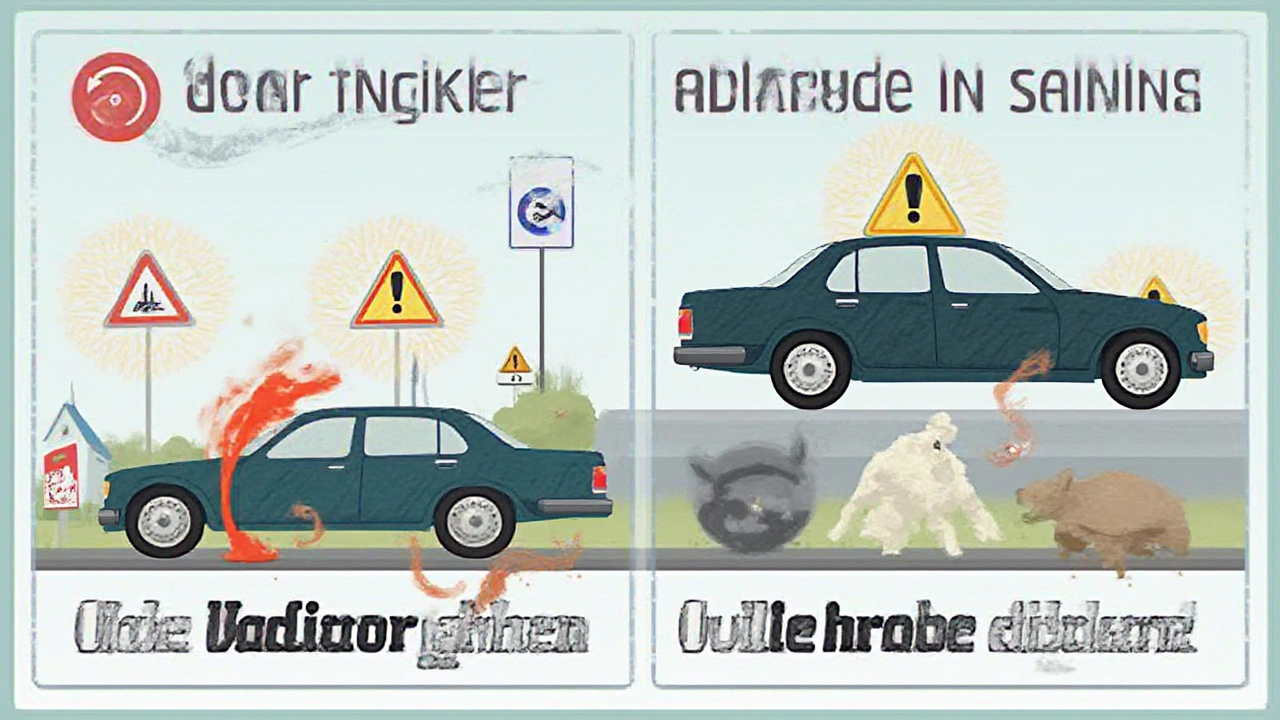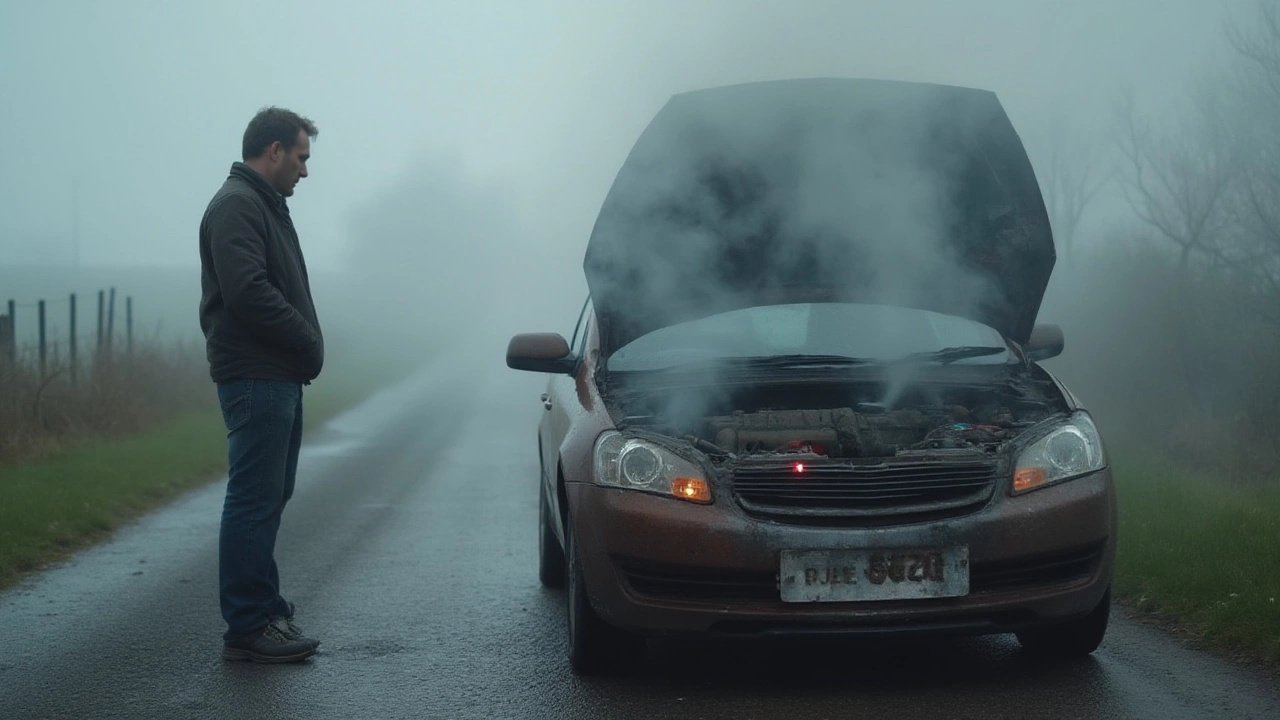You’re cruising to work and suddenly you see that temperature gauge inching higher, maybe even escaping into the red. One minute, life’s normal; the next, you’re wondering if your whole afternoon is headed for meltdown—figuratively and literally. Driving with a bad radiator isn’t just gambling with a repair bill. It’s risking the heart of your car: the engine.
How a Radiator Actually Works
The radiator is like your engine's personal air conditioner, but it works off liquid instead of chilly air. Every car's engine generates heat. A lot of it. We're talking enough to warp metal if unchecked. The radiator’s job is to pull that heat away, using a mix of coolant and airflow. Here’s how it goes down:
- Your engine burns fuel and creates heat.
- Coolant fluid absorbs that heat, running through passages in the engine.
- The heated coolant then flows into your radiator.
- The radiator, sitting right at the front of your car, uses thin metal fins and crisscrossed pipes to slow the coolant and let airflow pull out heat as you drive.
- That now-cooled liquid returns to the engine to start the cycle all over again.
Any glitch—cracks, clogs, damaged fins, or leaks—and things stop cooling off. One tiny crack, and you’ve got coolant splattering everywhere instead of running through the system. That’s most common with old hoses or rusty radiators, especially in regions with harsh winters or heavy use. Not all problems are visible; internal blockages from old coolant or mineral deposits can choke flow, so the radiator isn’t always blameless when things overheat.
What Happens If You Drive With a Bad Radiator?
Say your radiator has a leak or is gummed up with scale—can you still drive? Yes, technically, but only for very short hops, and you’re playing with fire (or rather, boiling water). Here’s what goes down, step by step:
- First, the engine temperature rises beyond normal.
- Without proper coolant flow, parts expand unevenly. Metals can warp, gaskets fail.
- If the engine gets too hot, oil starts to burn off, losing lubrication.
- The head gasket might blow, pressurizing the cooling system and spilling coolant rapidly. That’s a price tag of thousands to fix.
- Worst-case scenario—your engine block itself cracks or seizes. Now you’re looking at a total engine replacement.
Most modern cars have warning lights or temperature gauges, but older cars might just quit with a big hiss of steam. The tricky part? If you only notice problems when the car is seriously overheating, it’s often too late to avoid major engine damage. Even a couple of overheats can shorten engine life. And a bad radiator can also cause your transmission to run hot—especially if you drive an automatic, since many radiators cool both engine and transmission fluids.
The cost difference is huge: a radiator fix might run $300–$900, while severe engine or gasket repairs quickly multiply that number several times over.

Warning Signs That Your Radiator’s in Trouble
Before you end up stranded with billowing steam, watch—or rather, sniff—for these classic symptoms:
- Engine overheating on the temp gauge or dash warning light is a red alert.
- Sweet, syrupy smell under the hood: leaking coolant.
- Puddle of green, orange, or pinkish fluid under the front of your car after parking.
- Low coolant levels—if you’re topping off regularly, that’s not normal.
- Steamy vapor pouring from under the hood, especially in stop-go traffic or after highway driving.
- The heater stops working (because the coolant’s not circulating properly).
- Rust spots, flaky metal, or white crusty deposits on radiator fins or hose clamps.
- Visible cracks or splits in radiator hoses.
- Sludgy, oily residue in coolant—sometimes from leaking oil coolers or head gasket failure.
Don’t ignore these. Sometimes, the only thing between you and a tow truck is catching problems early. A cracked tank, leaking seams, or even a missing radiator cap can dump coolant faster than you think. Heat builds up much quicker when you’re stuck in traffic, idling at lights, or climbing long hills.
What To Do If You Need to Drive With a Bad Radiator (In an Emergency)
Maybe you’re stranded at the side of a country road, no cell signal, and you’ve spotted fluid gushing beneath your front bumper. Towing’s not an option. You need to limp to safety—a few miles at most. Here are practical, real-world tips to keep things from going nuclear:
- Let the engine cool down completely before opening the hood. Hot radiators can unleash boiling steam—serious burn hazard. Wait at least 30–60 minutes.
- Top off the radiator with clean water (if coolant isn’t available). Yes, water will suffice in a pinch, but always add proper antifreeze when you get the chance—it guards against corrosion and freezing damage.
- Leave the radiator cap slightly loose if it’s leaking—this can prevent system pressure from building, which reduces sudden leaks, but don’t drive like this for long.
- Turn the heater on full blast. Sounds backwards when it's 90°F outside, but your car’s heater actually pulls heat out of the engine coolant—giving the radiator some backup.
- Keep speed moderate. High speed means higher revs and more heat. Stick to gentle driving, coasting when possible.
- Stop and cool down often. If the gauge starts climbing or the car starts to shudder, pull over immediately and let it cool off before continuing.
Pay attention to warning lights, odd smells, and strange steam. At the very first sign of major overheating, shut it down. Your bank account will thank you later.

Smart Maintenance: Don’t Get Caught Out By Radiator Problems
Here’s the part nobody loves but always pays off: regular radiator and cooling system care. Most carmakers recommend flushing and refilling coolant every 2–5 years or 30,000–60,000 miles, depending on your vehicle and the type of antifreeze you use. Modern "long life" coolants can truly last several years... but only if the rest of the system (like rubber hoses and metal clamps) holds up.
- Check coolant levels at least every oil change. It should be bright (not brown or oily) and free of chunks or floating bits.
- Give the radiator a visual once-over. Any white residue, green streaks, or burnt smells aren’t normal.
- Keep an eye on hoses—squeeze them while the engine’s cool. If they’re mushy or dangerously hard, replace them.
- Don’t skip the radiator cap. A worn cap can’t hold pressure, so coolant boils at lower temps and leaks out the top. Caps are cheap—swap them as often as your hoses.
- Flush the radiator periodically to get rid of rust, scale, and old coolant. If you’re handy, you can do this yourself. Otherwise, ask your mechanic during a scheduled service.
- Use the coolant type recommended in your owner's manual. Mixing types creates sludge and shortens cooling system life.
Here’s an odd fact: In 2022, AAA reported nearly 2 million roadside assists for overheating engines in the U.S. alone. The number one cause? Cooling system problems, mainly leaky or plugged radiators. With a quick five-minute check-up every few months, you’re way ahead of that curve.
So, can you drive with a bad radiator? For a couple of blocks, maybe. As a daily habit, you’re just pushing your luck—and your engine—way too far. Watch for warning signs, do the basic checks, and treat radiator leaks as a five-alarm fire. Your car (and your wallet) will stay a lot cooler that way.

